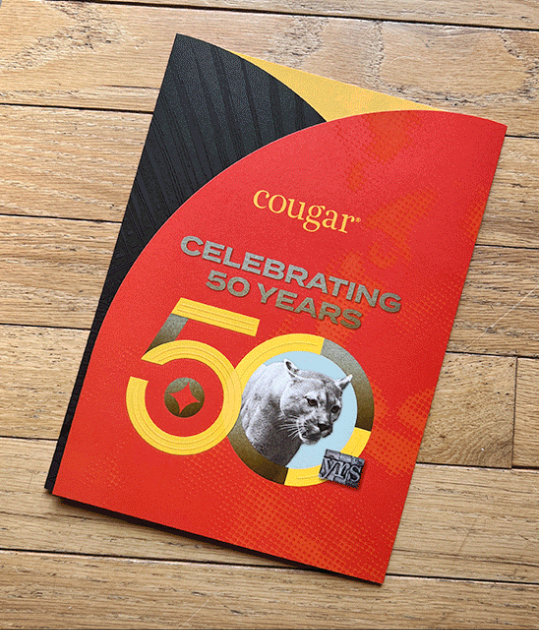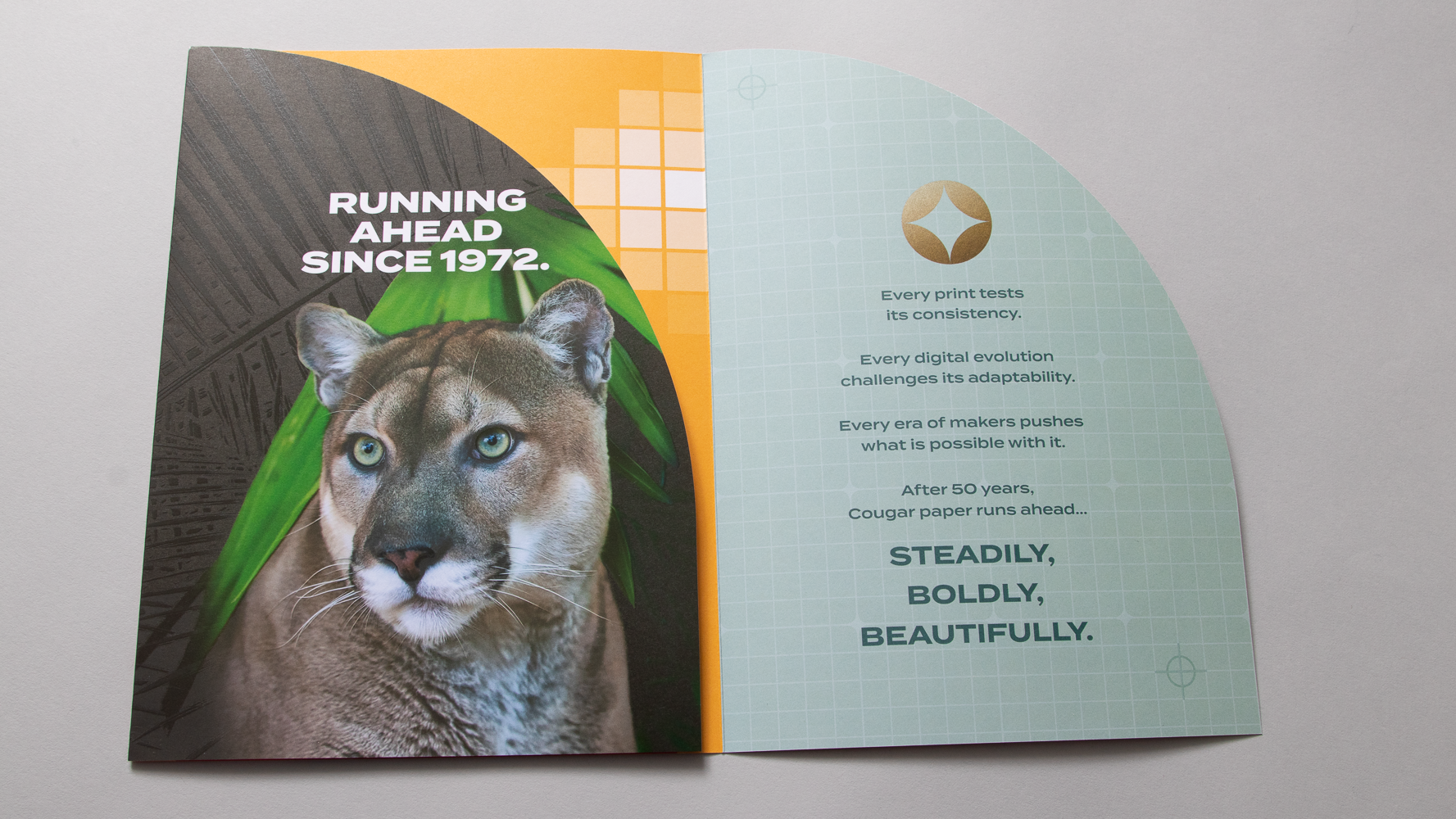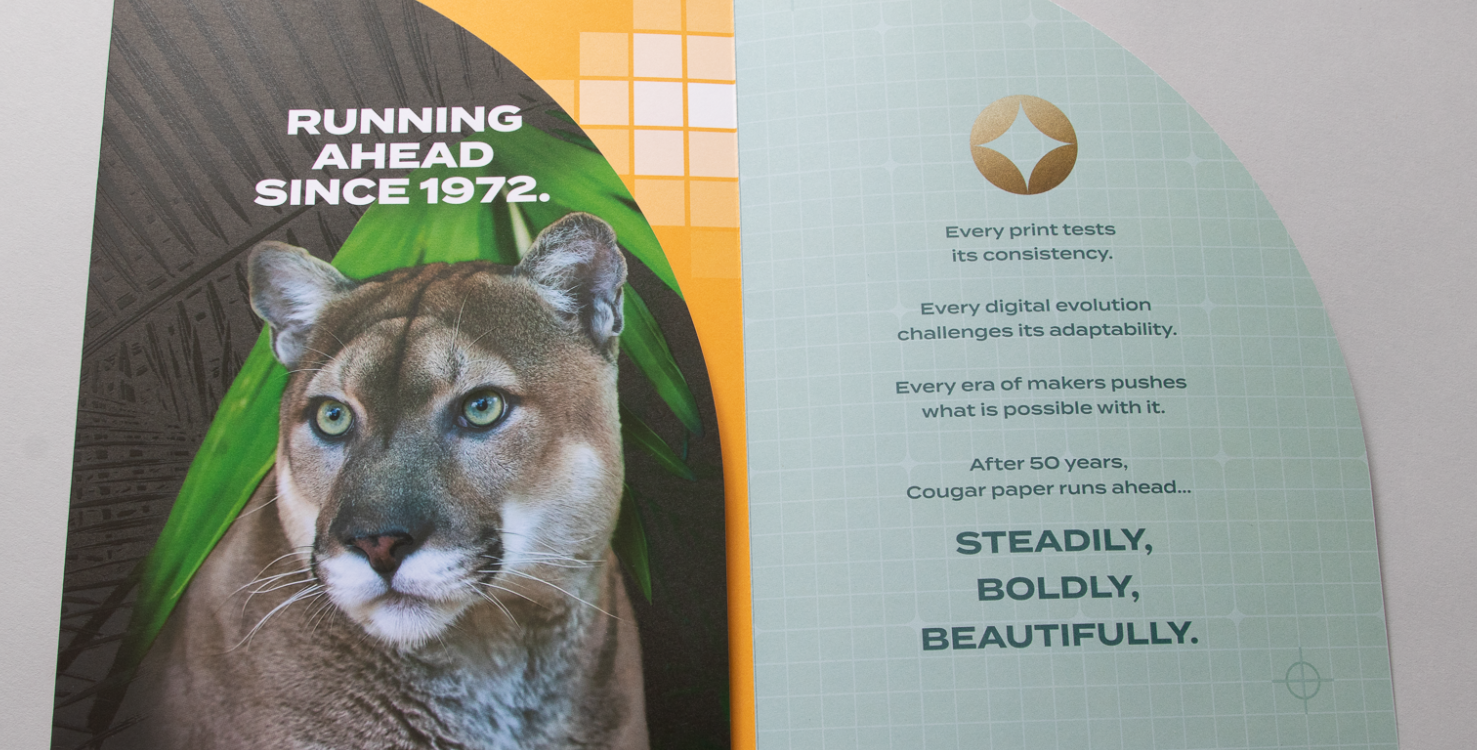In today’s highly competitive marketing landscape, you have to do more than just get your content in front of your audience. If you aim to leave a lasting impression upon your customers, then you must engage their senses. One of the most effective methods is through the use of print techniques that appeal to the sense of touch—in this regard, a soft touch coating is an excellent option for businesses looking to create a tactile experience for their customers. Just take one look at our latest Cougar® Print Techniques Brochure and you’ll want to get a feel for what we’re talking about.
What is Soft Touch and How Does it Work?
The use of a soft touch coating, also commonly referred to as “soft feel,” in print to achieve a connection through touch is a trend that has been around for a while. This technique uses a special coating that creates a raised effect, adding depth and texture to the design. For the brochure, we used it on both the cougar image on the cover as well as on the cougar within (pictured below) to make them stand out in a tactile way.

One of the benefits of soft touch coating is its ability to add an element of luxury to your marketing materials. The coating contains a paraffin wax that gives it a soft feel and it’s applied using a polymer plate transfer. For the brochure, we used the technique on the cougar as a spot treatment and mixed the coating with gloss varnish to give it dimensionality.
The raised effect created by the coating draws attention to certain areas of the design like the image of the Cougar staged within the 50 on the front cover of the brochure.

The texture of the coating creates a natural focal point that draws the eye—this can be particularly effective when highlighting key messages or calls to action. Soft touch coating can also be used to create contrast within the design. By applying a soft touch coating in concert with other print techniques like embossing or debossing, you create layered effects that add depth and visual interest to the design and make your marketing materials more engaging for your audience. When you combine those techniques with high-quality paper like Cougar, you can elevate the perception of your brand and magnify the impact of your piece.
How You Can Take Advantage
It’s important to understand why engaging the sense of touch is important in marketing. Our brains are wired to respond to sensory stimuli and engaging multiple senses can create a more memorable and immersive experience. In a world where we are bombarded with digital advertising, creating a physical experience through touch can help your marketing materials stand out and be remembered. One thing to keep in mind is that print techniques add cost to any print project, and the more techniques you use the more costly your piece may be. That’s why the USPS is offering discounts to marketers who employ print techniques—they know what moves the needle and want to ensure that everyone can make it fit their budget.

The Tactile, Sensory, & Interactive (TSI) Promotion is currently available and encourages mailers to “excite their customers’ senses by incorporating innovative techniques into their First-Class Mail® and USPS Marketing Mail®”. If you’re interested in how new developments in finishing techniques and inks can be incorporated into your mailpieces at a discount, you may want to read our breakdown of the TSI USPS incentives.
Click this link to request a copy of the brochure for yourself.



Discussion